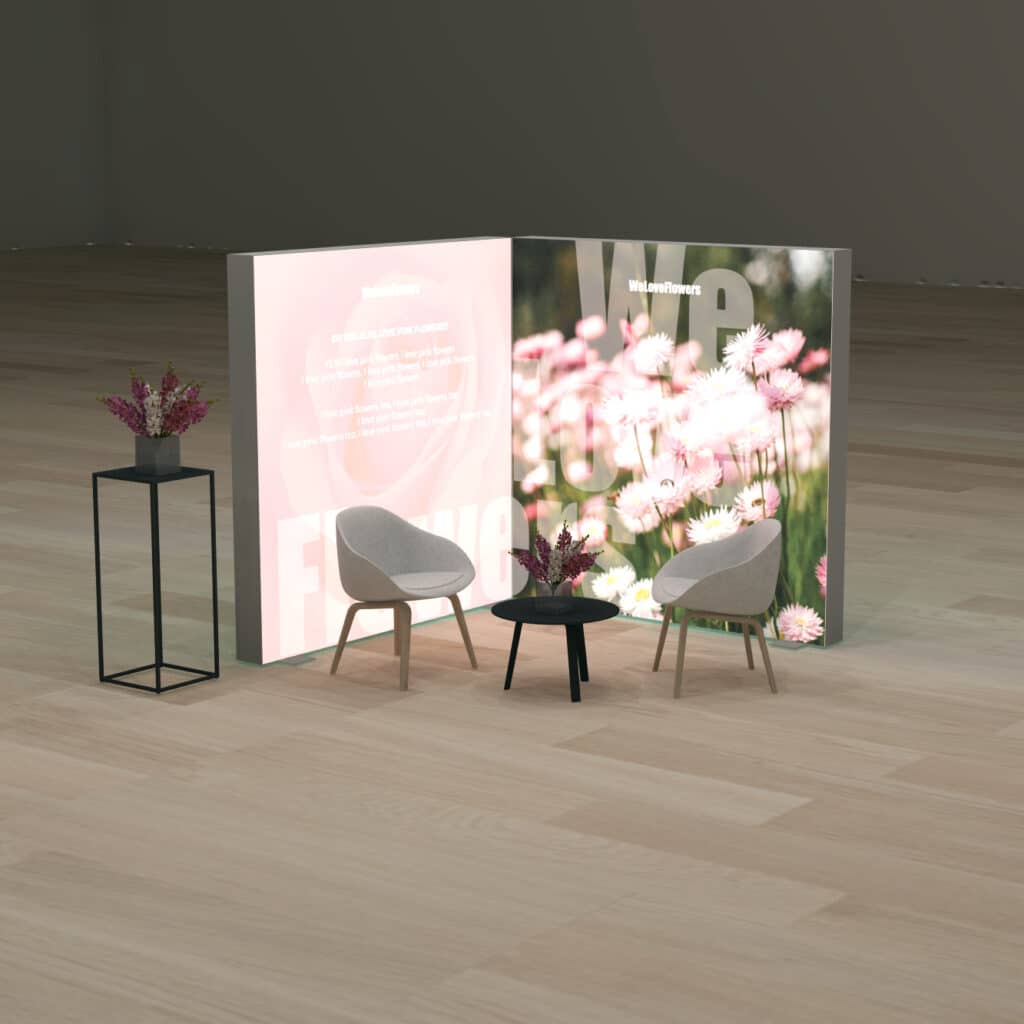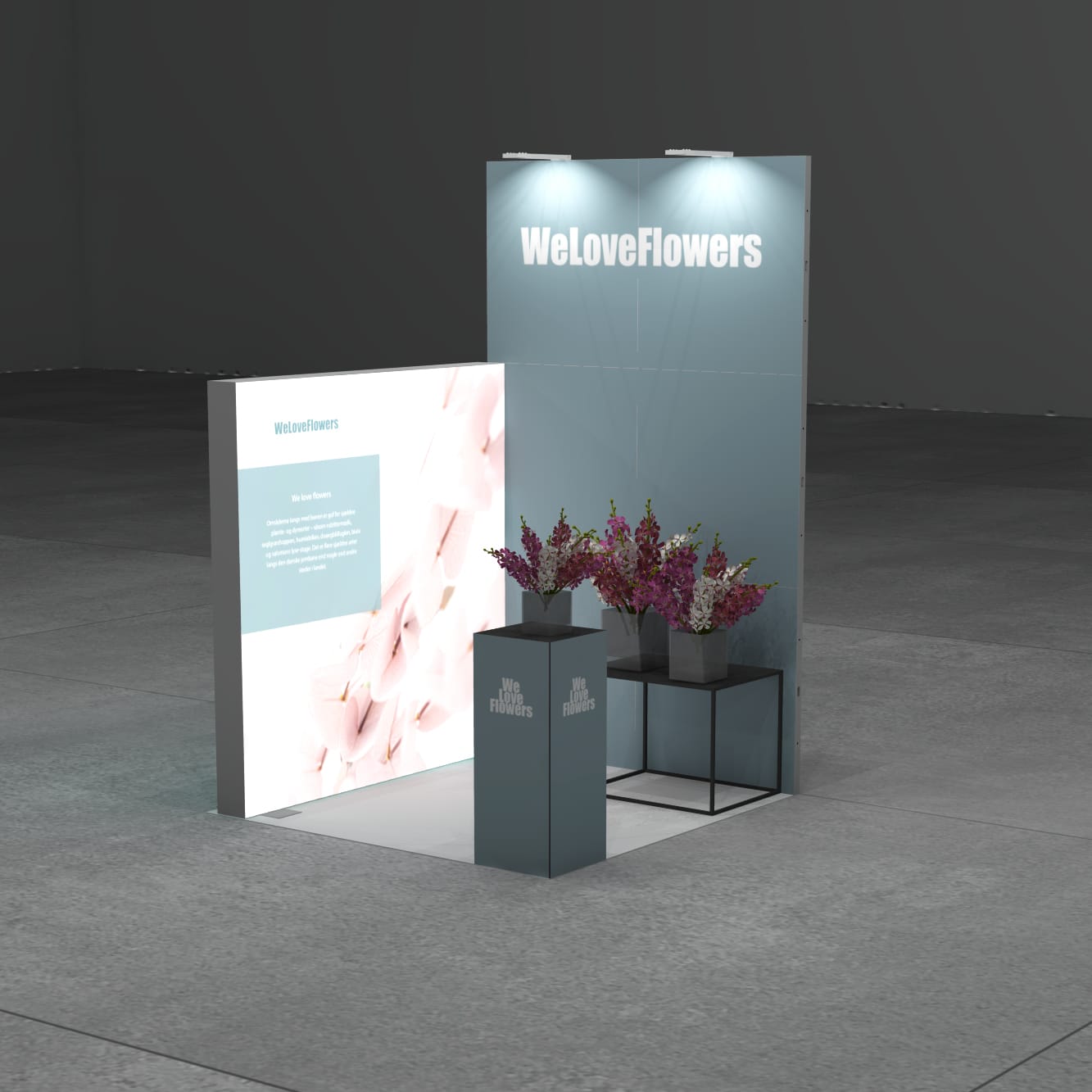There are plenty of skilled trade show booth builders. Creative people, skilled printers, experienced craftsmen, all great at meeting deadlines. The marketing staff is equally skilled. But if we go from considering the trade fair booths’ aesthetics to considering it as ‘value-creating’, the picture looks very different.
A few years ago, trade show equipment and graphics were essential which is still the case. And rightly so because it’s important. But now, most important of all is value creation – both for the exhibitors and for their customers.
If you make an analogy to a play, you can see the trade show booth as the scenography. It sets the right mood and gives the actors the props and decorations they need to be able to play their roles.
In the same way, the trade show stand design must support the tasks that the employees have at the fair. And their task is to play their roles as planned to achieve the objectives set for trade fair participation. They need to use the stage to perform and convey the right messages, to the right customers, in the right way and at the right time.
If a script and a list of roles have not been created prior to the fair, the trade show staff will at best be present at the booth and do as they usually do. And at worst, they will feel out of place, insecure, and work for arbitrary goals. And value creation risks becoming non-existent or at least random and undocumented.
When value creation is the focal point of trade show participation, it no longer just becomes a question of whether the trade show booth is nice, whether the printed handouts are on the right shelves, whether there is coffee on the table or whether the carpet is vacuumed.
Now it is more important than to get all the trade fair activities to co-exist and create a unique performance: The communication at the booth must be customer-oriented so that the messages speak to the guests’ needs, the activities at the booth must also support the message or messages and the flow and tours of the trade show booth, must be relevant.
And most importantly: the marketing staff, the sales staff, and other important stakeholders must be aligned and work towards the common goal set for the trade fair participation.
Make sure your communication is visitor-oriented. Do not tell what you are able to do, but how you can contribute to value creation for the customer.
Make sure that you create more entrances that guide visitors towards your message(s) at the trade show booth.
Create the opportunity to tell your message(s) from the angle that interests the customer.
Train your staff to use the trade show “stage” and make sure that your staff knows how to use the booth optimally.
Commit your staff to the objectives set for the trade fair.
When we claim that trade show equipment and graphics are secondary, it must be understood in that way that these two areas are not the only goal themselves.
The goal is to get trade show equipment, graphics AND activities, employees, customers, etc. to align so that needs, and services “come together”
and value is created for every stakeholder involved.
The “play” must be enjoyable to watch, and the scenography must be in place so that the actors can act and step into character and get their messages to reach their potential customers.





With explicit goals and a well-defined target group, motivated staff, and systematic (and digital) collection of leads, the follow-up will be piece of cake. The only thing it requires is that you have complete control over these 5 areas:
Which leads do you need to take home to achieve your goals – what characterizes a good, hot lead for you?
What information do you need to collect about your guests/leads, in order to be able to follow up purposefully – what do you need to remember to get answers to and permission for?
What will you follow up with and how will you send out the material? Have brochures, prices, pdfs, etc. ready before you leave.
How do you collect leads to streamlining the following-up process – do you have the right (digital) tools available?
Who does what, when? How do you easily and quickly get your leads into your CRM so that they are part of the existing sales process?
Easy and targeted follow-up starts before the fair. Mindset, ownership, internship, and time in the calendar must be aligned and fine-tuned so that your promises do not become unmanageable to keep when you return from the fair.
And just to return to my friend from the Euro Shop – my path to becoming a customer with him, could have been much smoother if he had been completely focused on the above 5 areas – and had he kept what he promised …
In a sea of exhibitors it can be hard to differentiate yourself and stand out from the crowd. So how do you design an exhibition stand that stand out AND create value? That's exactly what we dive into in this course.
You'll gain the knowledge and skills needed to design exhibition stands that meet your objectives and make a lasting impression on your target audience.
You can't improve what you don't measure. Discover how to define, measure and manage your objectives.
*included for FREE in all courses
You can unsubscribe at any time. By filling out the form, you accept to receive news and promotional material from us. Read more in our privacy policy
© 2023 thetradeshowacademy.com – Designet af Aveo web&marketing